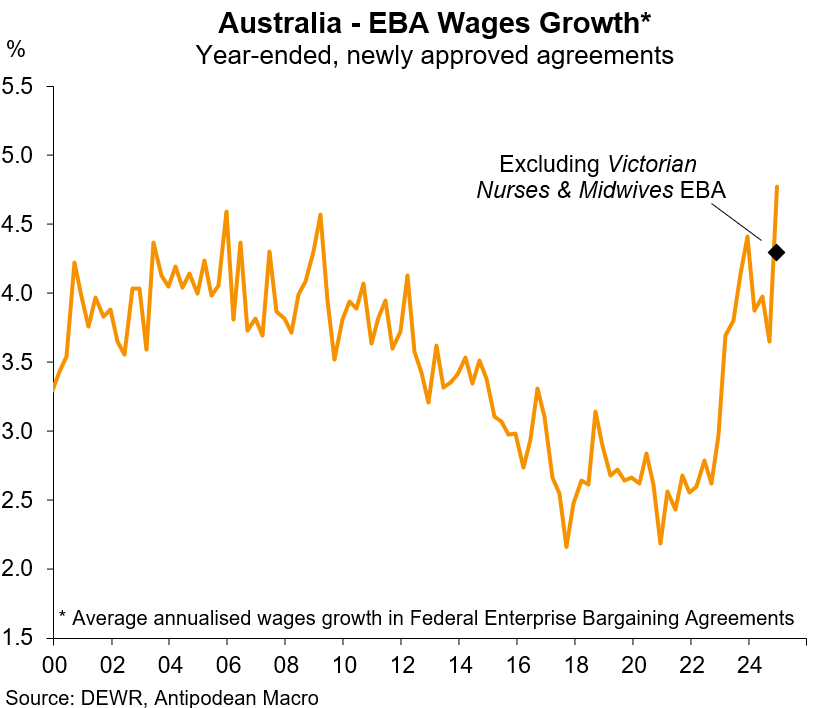We have analysed scheduled wage increases in 542 Federal Enterprise Bargaining Agreements (EBAs) approved by Australia’s Fair Work Commission in the March quarter of this year.
Why do this?
EBAs account for ~35% of Australia’s wage price index and with an average term of ~3 years can instil some momentum in aggregate wages growth. The latest available EBA data also showed a large jump in average contracted wages growth in coming years so we wanted to dig deeper to investigate.
Quarterly summary data for EBAs are published by the Department of Education and Workplace Relations (DEWR) but these data have limitations. First, they are published with a long lag. Secondly, only average annualised wages growth across the total duration of EBAs approved in a quarter is published.
Importantly, the DEWR data do not provide an annual profile for average wages growth in newly approved EBAs. Therefore, we cannot gauge if EBA wages growth is typically expected to strengthen or moderate over time.
For example, the DEWR data showed a sharp jump in the average annualised wages growth in newly approved EBAs to 4.8% in Q4 2024 (see chart). Closer inspection, however, revealed that one agreement - the Victorian Public Sector Nurses & Midwives EBA - accounted for a sizeable share of that increase.
Further, while average annualised wages growth in the Victorian Nurses EBA was 6.7% for the period covered to 2028, this included a large wage rise of 9.4% in the final year of the agreement. That is not relevant for gauging the nearer-term outlook for wages growth and annual wage increases in the Victorian Nurses EBA are ‘just’ a little more than 4% for the coming 2 years.
This example shows the importance of more granular detail on EBAs to get a better feel for typical wage increases in newly approved EBAs and the annual profile of those increases.
That is our focus here.
A challenge of tracking wages growth in newly approved EBAs, however, is the sheer volume of EBAs the Fair Work Commission approves each quarter - 935 were approved between 1 January and 24 March this year! The EBAs do not have a standard format and extracting wages growth from each agreement is labour intensive.
We trawled through 543 EBAs approved in the March quarter.
Keep reading with a 7-day free trial
Subscribe to Antipodean Macro Professional to keep reading this post and get 7 days of free access to the full post archives.


